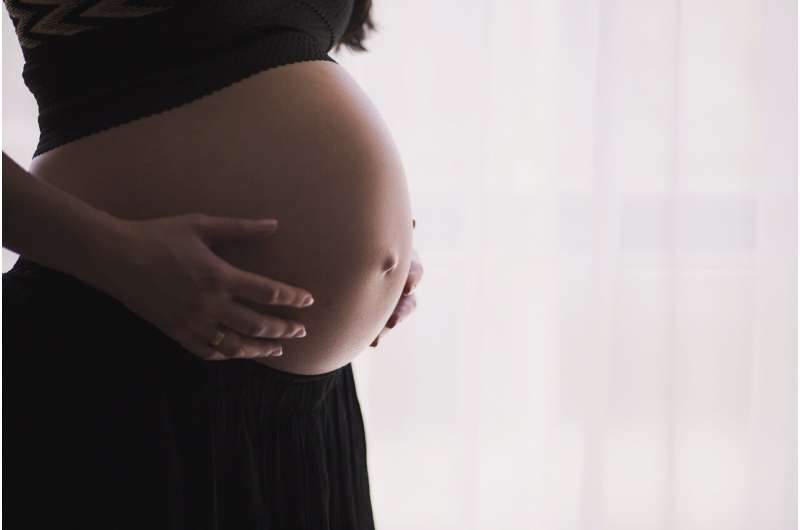Credit: CC0 Public Domain
University of Illinois Chicago researchers studying birth outcomes in marmoset monkeys found there were no adult maternal characteristics like age or weight gain during pregnancy to predict stillbirth or early neonatal death, but that a mother's birth weight or litter size were associated with early neonatal death.
"Our findings of early life contributions to adult pregnancy outcomes in the common marmoset disrupt mother-blaming narratives of pregnancy outcomes in humans," the paper states.
Julienne Rutherford, associate professor at UIC's School of Nursing, is lead author of "Womb to Womb: Maternal litter size and birth weight but not adult characteristics predict early neonatal death of offspring in the common marmoset monkey" published in the journal PLOS ONE.
Marmosets are primates who naturally produce twins, triplets and quadruplets in litters, which allow researchers to look at how different prenatal environments influence female reproductive biology. Earlier research by Rutherford and colleagues suggests that for marmoset triplets, in utero fetal life is more crowded and competitive, and they sought to find out if those factors influence pregnancy success in adulthood, a concept Rutherford calls womb-to-womb.
Rutherford and colleagues explored whether pregnancy outcomes were predicted independently by maternal adult weight versus maternal litter size and birth weight in marmoset monkeys. The study also explored whether stillbirth and early neonatal death were differentially predicted by maternal variables.
The study found that female marmosets who were triplet-born or born at lower birth weights had greater rates of infant loss during the first week of life when they became mothers. No adult maternal characteristic predicted early infant loss, and no maternal characteristic—whether when she was born or when she was an adult—predicted stillbirth in this study.
The infant marmosets who died during their first week lost significantly more weight compared with infants who survived but otherwise showed no other deficits at birth that would have predicted their deaths.
"Significant weight loss suggests they are not eating and that presents a potential pathway for asking more questions about how a mother's early life development might shape her milk production as an adult and feeding behaviors in her own babies," Rutherford said.
Rutherford said the study's findings suggest that our current approach to understanding perinatal mortality is incomplete. The causes and pathways for stillbirths versus infant death need to be understood independently. And the rigid focus on adult health and lifestyle as risk factors leaves out a huge sphere of experience and impact on pregnancy outcomes, she added.
"So much guilt and shame around pregnancy loss at every time point is in part because of our focus on lifestyle, and the individualist emphasis on personal responsibility complicates our ability to address the problems that are deeper, structural and intergenerational," Rutherford said.
"Millions of pregnancies end in really sad losses for parents, and we are still not great at understanding why that happens," Rutherford said. "Most of the things you would look at to be predictive risks focus on the woman's health history around the time of pregnancy, or race, which is really a reflection of racism. There is a lot of obsession about weight and other kinds of 'lifestyle' decisions, things that fall under individual responsibility. But these risks don't predict all these losses. Neonatal deaths still happen even when people do all the 'right' things."
Rutherford added she hopes this research can contribute to the larger view of health equity.
"What does monkey biology tell us about justice?" Rutherford said. "I see an opportunity in this kind of work to think about reimagining the way we approach human health and human health care that is just and biologically sound."
More information: Julienne N. Rutherford et al, Womb to womb: Maternal litter size and birth weight but not adult characteristics predict early neonatal death of offspring in the common marmoset monkey, PLOS ONE (2021). DOI: 10.1371/journal.pone.0252093
Journal information: PLoS ONE
Provided by University of Illinois at Chicago
























